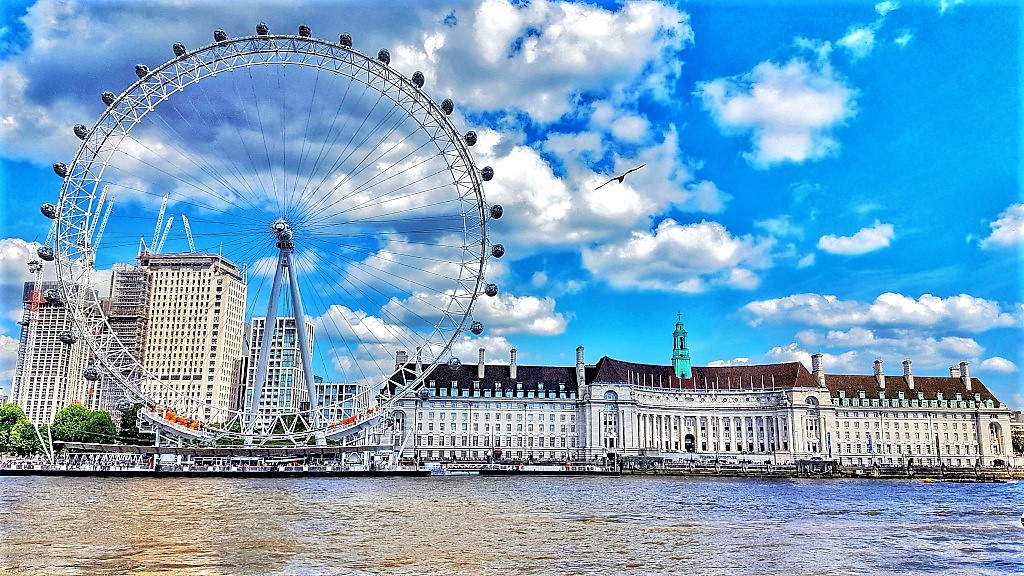In the first of our Streets of London series that provides insight into various parts of London and their distinctive history, Mark Bibby Jackson goes on a Southbank London walk on the south side of the River Thames between Westminster and London Bridges.
London Southbank is an area of the capital that has played a really strong part in my life. It was here that I started working in the dungeons of County Hall back in the very late 80s. Then I would meet my father for lunch and regardless of the London weather we would stroll along the south bank of the Thames seemingly with the whole place to ourselves. Now you are more likely to have to play dodge the jogger – I used to be one – but still Southbank remains one of my favourite London walks.
In the intervening decades the area has changed markedly, although some of the key landmarks remain constant. Starting on the south side of Westminster Bridge opposite Big Ben and the Houses of Parliament, here is my Southbank London walk.
Southbank London Walk from County Hall to the Royal Festival Hall
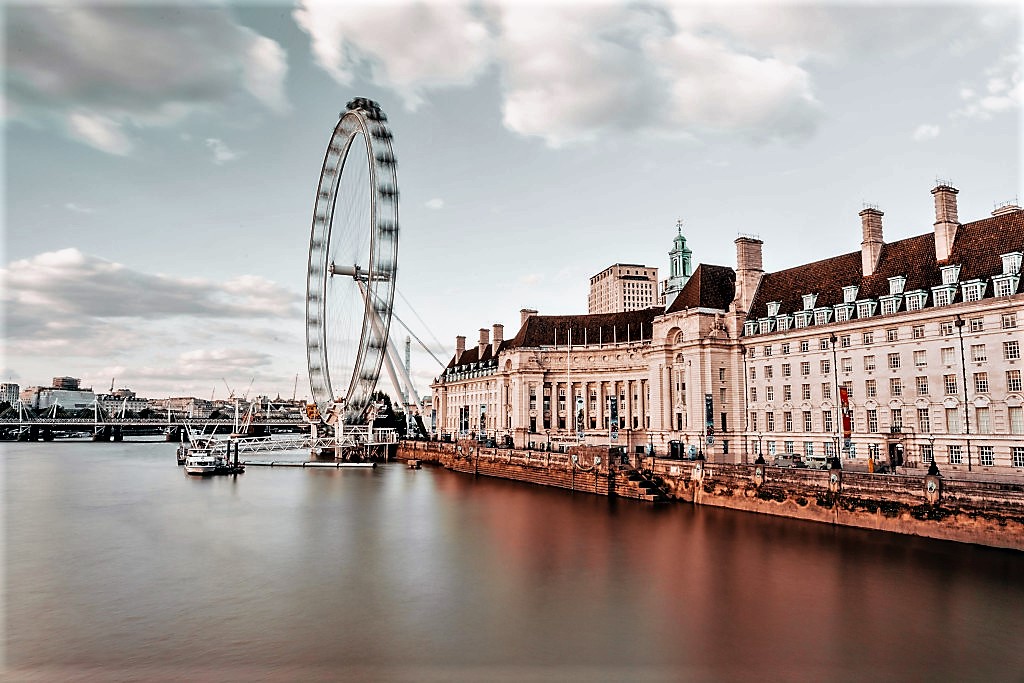
When I first worked here, County Hall was still the seat of government in London. There was no Mayor of London, but Ken Livingstone used to yield power at the London Residuary Body, the culled version of the Greater London Council. The Grade II* listed building was opened by George V in 1922, although the North and South Blocks were added in the 30s. It has much historical interest as it was the seat of power in London for more than 60 years. Now it has become a Marriott hotel and houses both the London Dungeon and Sea Life London Aquarium. Well, they do often accuse politicians of living in a goldfish bowl, and many people believe they should be locked up.
Directly in front of County Hall is one of London’s major tourist attractions. When it was built in 2000 as the Millennium Wheel, the London Eye used to be the largest Ferris wheel in the world – a title now claimed by the High Roller in Las Vegas – and the highest public view in London – now The Shard. Still, the Eye provides a magnificent panoramic view of London from 135 metres above the Thames. It draws some three million visitors each year.
Created in 1977 to mark the Queen’s silver Jubilee, Jubilee Gardens stretches from County Hall towards the Hungerford Bridge. This is a great place to chill when the sun comes out, or for the kids to play in the sustainable park. It is also part of the regeneration of the whole area which led to the opening up of Southbank London, including the riverside walkway.
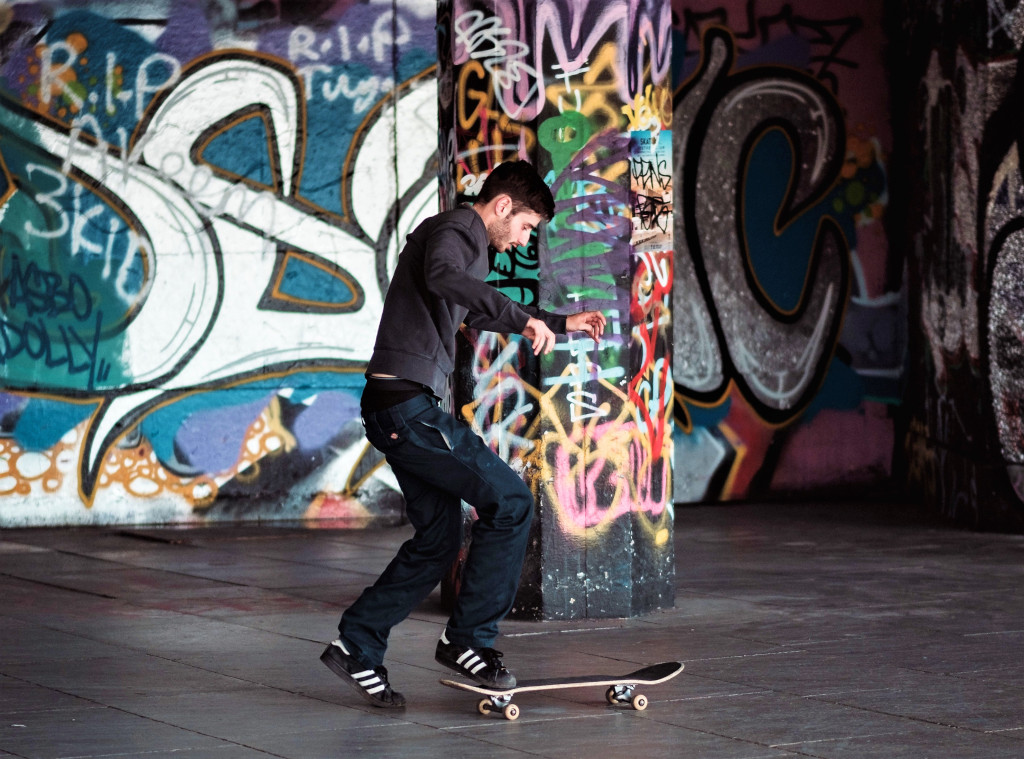
Just beyond it lies the Southbank Centre, the largest arts centre in Europe. The idea for the centre dates back to the Festival of Britain in 1951, although the Royal Festival Hall is the only building that still remains from the festival. The Southbank Centre has two thousand paid performances each year at the Saison Poetry Library, the Queen Elizabeth Hall and the Purcell Room, as well as exhibitions at the Hayward Gallery. There are an equal amount of free events played in and around the centre, as well as numerous food outlets.
National Theatre to Oxo Tower
One of my favourite parts of this London walk is the little stretch underneath Waterloo Bridge. This is where the Southbank second-hand book market has stood since 1982. Imagine you are transposed to the banks of the Seine in Paris as you flick through the well-leafed books.

If you were to head right then you would reach an underpass leading to a giant roundabout. In the 80s and 90s the homeless used to live here in their cardboard box homes and were fed at the nearby Salvation Army centre. The area used to be called Cardboard City, but now it houses the Odeon BFI IMAX, Southbank, which has the largest screen in Britain.
On the opposite side of Waterloo Bridge is the second half of the Southbank’s cultural extravaganza. If you are looking to view some classic black and white films, often painstakingly restored, or non-Hollywood foreign imports the BFI Southbank is the place to go. As the National Film Theatre it moved here in 1957 and hosted the first BFI London Film Festival in the same year. The leading rep cinema in the UK, it was enlarged and renamed the BFI Southbank in 2007.
A clever way of building a nuclear power station in the middle of London without anyone objecting
Next to the BFI Southbank is the National Theatre (NT) beside the statue for Sir Laurence Olivier, who masterminded the project to open the theatre which was completed in 1977. The Brutalist architecture has not been without its critics. Prince Charles described it as “a clever way of building a nuclear power station in the middle of London without anyone objecting”. But over the years it has become a London landmark best viewed from Waterloo Bridge. The publically-funded complex includes the Olivier, Lyttlelton and Dorfman Theatres and hosts the National Theatre Company, ensuring some of the best theatrical productions in the world are performed here. Free performances are often put on outside the NT.
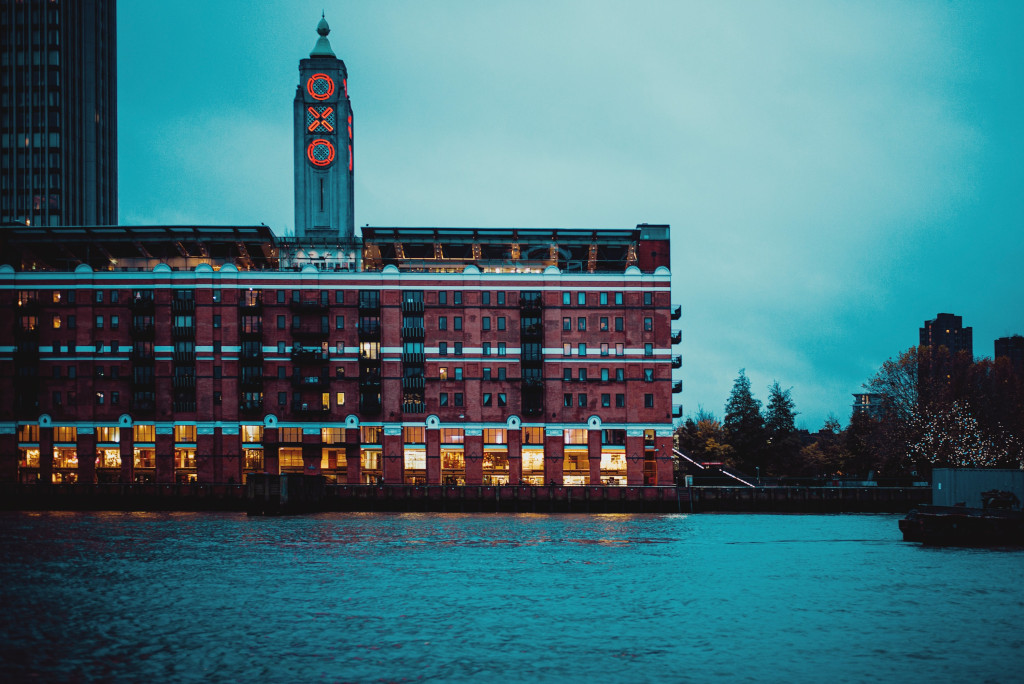
Although the area is littered with many restaurants including some interesting pop-ups, invariably I find myself drawn to Gabriel’s Wharf if I am looking for something to eat on my Southbank walk. It certainly has a buzz especially when the sun is out. The Wharf is part of the Coin Street community, a social enterprise that also includes my favourite building along the Southbank, Oxo Tower.
Standing like an Art Deco monolith amid the surrounding more contemporary architecture, the Oxo Tower was originally a power station to supply electricity to the Royal Mail post office in the 19th century. Acquired by Liebig Extract, the manufacturers of Oxo, it was given its current striking design by architect Albert Moore in the late 1920s, and refurbished in the 1990s.
Tate Modern to The Globe
In truth the Thames Path goes through a bit of a lull as you continue your walk under Blackfriars Bridge that is only enlivened by the interesting mural in the underpass where buskers invariably play. However, as you emerge on the other side you discover the next landmark London building on our walk.
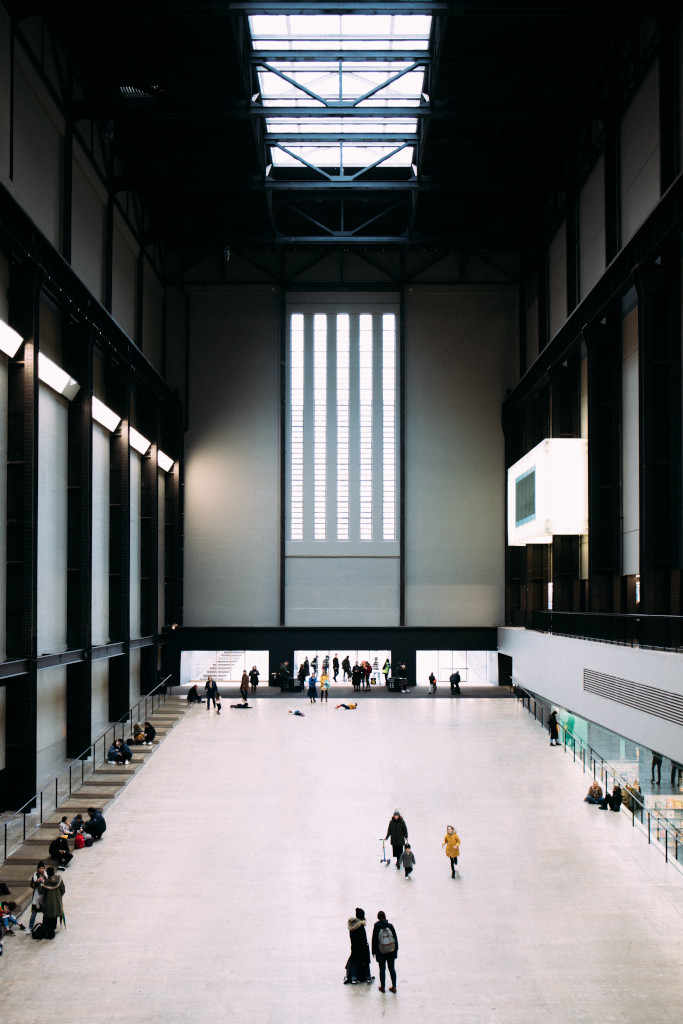
The architect behind Bankside Power Station, Sir Giles Gilbert Scott, also designed Battersea Power Station, Liverpool Cathedral and the iconic red telephone box. Scott was noted for blending the Gothic with modernism, and Bankside Power Station, which was built between 1947 and 1963 was no exception, creating functionality within a landmark structure. Perhaps this is why it has proved so popular as the Tate Modern, which was opened in 2000 swiftly becoming one of the most visited and largest contemporary art spaces in the world. Although certain exhibitions carry a charge, the main building with its impressive turbine hall and permanent exhibitions are free to enter.
If you wish to deviate from your walk north of the river, this is the time to do so. The pedestrian Millennium Bridge was designed as a thin sliver across the Thames to convey you from the Tate Modern to St Paul’s Cathedral. Although the bridge was christened the “Wobbly Bridge” due to the disconcerting feeling pedestrians felt as they crossed on its opening day, this was soon rectified, and it now provides safe and car-free access between the two halves of London.
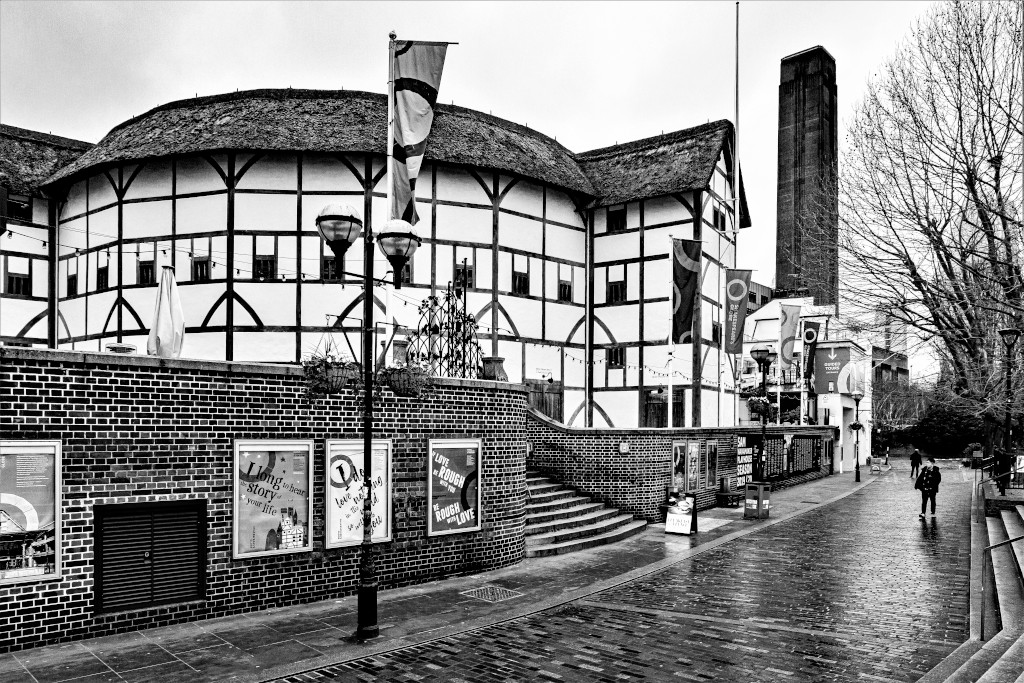
Next to the Tate Modern is the Shakespeare’s Globe, Sam Wanamaker’s long-term project to provide a theatre for performing the Bard’s plays in as authentic an atmosphere as can be replicated in the 20th and now 21st century. Opened to the public in 1997, it is close to the site of the original theatre where Shakespeare performed. In addition to daily performances the Globe also has informative tours so you can discover more about the project and how Shakespeare’s plays used to be staged. Just before you approach the Globe is a building which used to house Henry VIII’s first wife Catherine of Aragon, as well as Samuel Pepys while he designed St Pauls’ Cathedral.
Borough Market and Two Smoking Pubs
Passing beneath Southwark Bridge, the next place of interest is the Anchor Bankside, a great pub, and the sole surviving riverside inn dating back to the days when Shakespeare and his actors used to take a pint after performances. A pub has stood here for 800 years, although the current building was built in the 19th century and considerably remodified in 2008.
After a pint in the Anchor, pass beneath the railway bridge and past the medieval remains of Winchester Palace on your right, and you will find yourself at a junction. To your left lies Southwark Cathedral while to your right is Borough Market.
Southwark Cathedral, or The Cathedral and Collegiate Church of St Saviour and St Mary Overie to give its full title, was designated in 1905, although an Augustinian Southwark Priory stood here from 1106. The current cathedral adopts the form of the Gothic priory that was built between 1220 and 1420, although the nave is late 19th century. Despite being nowhere near as grand as St Paul’s Cathedral across the Thames, it makes for an interesting and free visit.
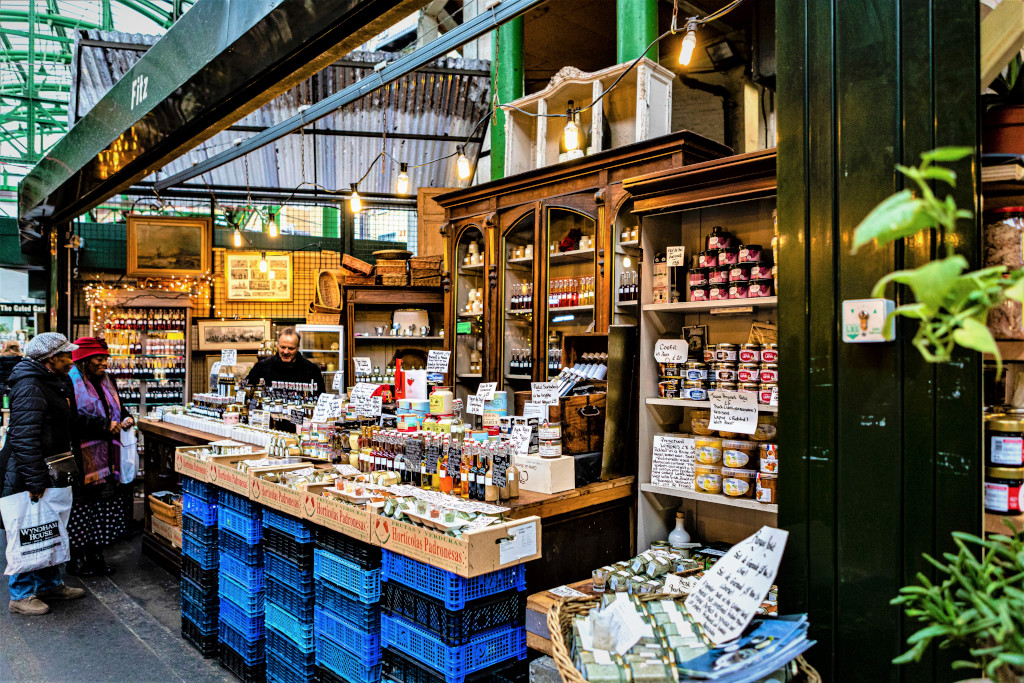
Most people, however, turn right and head to Borough Market. One of the oldest markets in London, the first mention of a market being held here was in 1276, although it is possible that there have been markets here from 1014 or even earlier. The current Victorian buildings and distinctive roofing were constructed in the mid-19th century, although the Art Deco entrance on Southwark Street is from 1932.
When I used to frequent the market in the 1990s, it was practically deserted once the wholesale food market closed apart from a few loyal punters who visited the Market Porter, Wheatsheaf and Globe Tavern pubs. However the area is now heaving with artisanal stalls, pop-ups, bars and restaurants as the area became discovered following its appearance in popular films, such as Lock, Stock and Two Smoking Barrels (1998) and Bridget Jones’s Diary (2001).
Conclude your London walk along the Southbank at the George Inn. Continue through Borough Market to Southwark Street and then turn left before crossing Borough High Street and head south (right).
Tucked down a tiny alley, the part timber-framed George is the only surviving galleried coaching inn in London. The current structure was built in 1677, after a fire levelled most of the surrounding area. Theatrical performances were most likely staged here in Elizabethan times, and Dickens refers to the George Inn in both Our Mutual Friend and Little Dorrit. Now the courtyard offers one of the largest outdoor spaces to enjoy a pint in London, although the interior is even more rewarding, with its many rooms, including the Coffee Room which Dickens frequented.
This is the perfect place to end our initial walk through London, unless you wish to continue your stroll along the Thames on to Tower Bridge and the Tower of London, or perhaps take the lift up The Shard for the best view of the ever changing London skyline, but more of that later in a future Streets of London.
Southbank London Walk Events
If you want to take in an event during your Southbank London walk, visit the official visitor guide to the area. Main image by Ozgur Kara – unsplash
